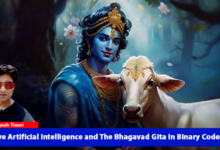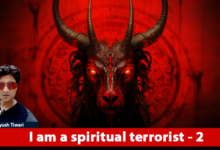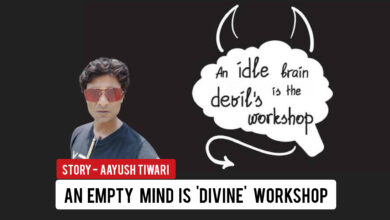
|
Getting your Trinity Audio player ready...
|
As human beings, we are constantly in a state of self-reflection and introspection. We are always trying to understand ourselves, our thoughts, and our actions. This process is often driven by the belief that there is a clear distinction between the observer and the observed – that there is an objective self that is separate from our perceptions and experiences. However, the concept of “the observer is the observed” challenges this belief and invites us to explore a deeper understanding of our relationship with ourselves and the world around us.
The phrase “the observer is the observed” was first introduced by the renowned philosopher and spiritual leader, Jiddu Krishnamurti. It is a fundamental concept in his teachings, which aim to help individuals break free from their conditioned patterns of thinking and perception. But what does this phrase really mean? And how can it offer us a new perspective on our understanding of self?
At its core, “the observer is the observed” suggests that there is no separation between the observer (our self) and the observed (the world around us). In other words, the self is not an isolated entity that exists independently from our perceptions and experiences. Instead, our perceptions, thoughts, and beliefs shape our understanding of ourselves and the world we live in.
To understand this concept better, let’s dive into some practical examples. Imagine yourself walking in a beautiful park on a sunny day. You see the vibrant colors of the flowers, hear the birds chirping, and feel the warm sun on your skin. In this scenario, you are both the observer (yourself) and the observed (the park). However, your experience of the park is not solely based on its physical attributes but also on your perceptions and interpretations.
For instance, if you are feeling stressed or anxious, your experience of the park may be different compared to when you are feeling relaxed and content. Your perceived reality is influenced by your internal state, which ultimately shapes your understanding of the external world. Similarly, if you have a negative perception of yourself, it can color how you interact with others and the world around you.
Now, let’s take this concept a step further and consider how our perceptions and beliefs about ourselves can limit our potential. We often create labels and identities based on our experiences, which can become ingrained in our sense of self. For example, if someone has always been told they are not good at math, they may develop a belief that they are not smart or capable in that subject. This belief then becomes part of their identity, and they may avoid pursuing opportunities that involve math, limiting their potential for growth.
In this scenario, the observer (self) is limited by the observed (perception/belief). We become trapped in our own perceptions and beliefs, which can hinder our personal growth and development. But if we were to recognize that the observer is also the observed, we can begin to question and challenge these limiting beliefs. We can see that our perceptions are not fixed truths but rather interpretations of the world, influenced by our thoughts and emotions.
Moreover, this concept also invites us to question the idea of a fixed self. Our perceptions and experiences are constantly evolving, which means that our sense of self is also in a constant state of flux. This realization allows us to let go of our attachment to labels and identities, freeing us from the limitations they impose.
So how can we apply this concept in our everyday lives? The first step is to cultivate mindfulness and self-awareness. By paying attention to our thoughts, emotions, and perceptions without judgment or attachment, we can begin to see the relationship between the observer and the observed.
One powerful way to practice this is through meditation. By focusing on our breath and observing our thoughts without getting caught up in them, we can start to see how our mind works and how our perceptions shape our understanding of the world. This can help us break free from conditioned patterns of thinking and open ourselves up to new perspectives and possibilities.
Additionally, we can also challenge our beliefs and perceptions by questioning their validity. Is this belief based on facts or just my interpretation? How does this belief limit my potential? By questioning and challenging our perceptions, we can begin to let go of limiting beliefs and create space for personal growth and development.
In conclusion, the concept of “the observer is the observed” offers a powerful insight into the relationship between self and perception. It reminds us that our internal state and perceptions shape our understanding of ourselves and the world around us. By cultivating mindfulness and questioning our beliefs, we can break free from limiting patterns of thinking and open ourselves up to new possibilities. So the next time you find yourself lost in your thoughts or struggling with limiting beliefs, remember that you are both the observer and the observed – and that realization can set you free.





